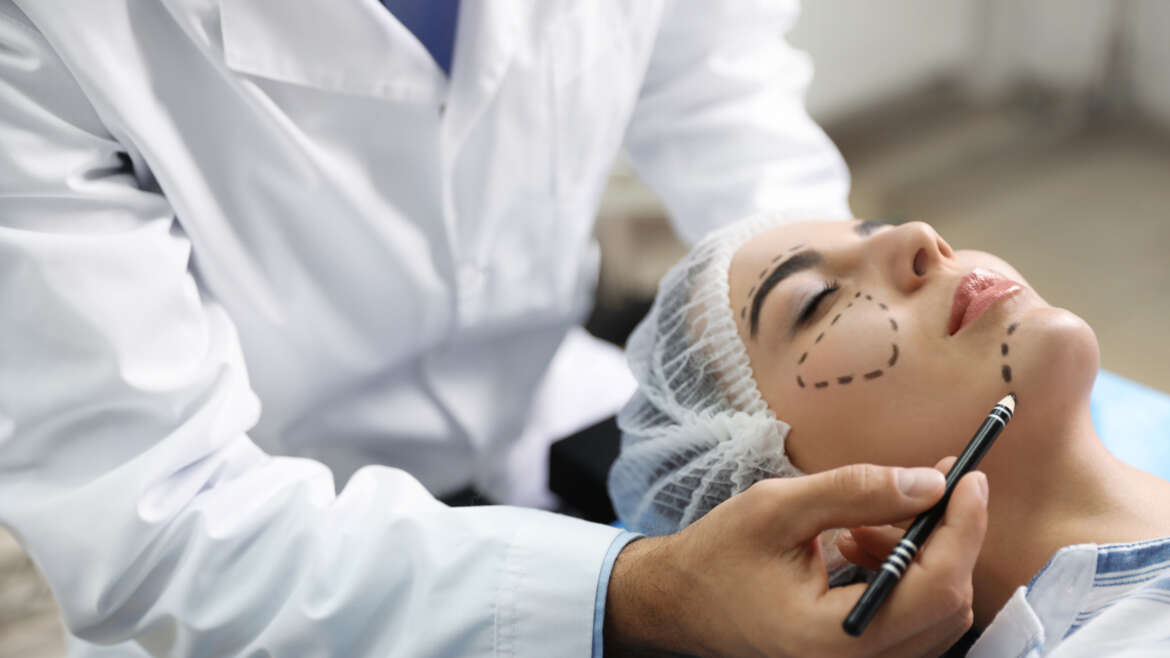Why Winter is the Ideal Time for Cosmetic Surgery
Winter often evokes thoughts of cozy sweaters, hot drinks, and festive holidays, but it also offers something unexpected: the perfect season for cosmetic surgery. According to Dr. Le of Plastic & Reconstructive Surgery a Division of U.S. Dermatology Partners, “While the idea of undergoing plastic surgery in the colder months may seem unusual, winter presents a unique set of advantages for those considering cosmetic procedures. The season’s cooler temperature, slower pace, and reduced social obligation create a perfect environment for recovery and healing after surgery.” In this blog, Dr. Le helps patients understand when to get cosmetic surgery and how the winter season benefits them post-procedure.
1 – Recovery Is More Comfortable in Winter
During the winter, Dr. Le says, “It’s often easier to heal after surgery in the winter. The reduced intensity of the sun’s rays and cooler temperatures just make surgical recovery a little less painful. You worry less about UV damage to sensitive post-treatment skin or deal with being hot and sweaty, leading to itchy or irritated skin.” Some of the reasons winter is the best time for plastic surgery with a more comfortable recovery include:
- Decreased swelling and bruising – these are two of the most common symptoms following plastic surgery. Cooler winter temperatures reduce the risk for swelling and bruising by constricting blood vessels.
- Alleviated discomfort – cold also has pain relieving benefits for itchy, irritated, or inflamed post-procedure surgical sites.
- Reduced symptom severity – common symptoms like pain, itching, irritation, and less common symptoms like infection can be reduced when the procedure is performed during cooler months. Sweating, heat, and sun all increase risk for these common and less common symptoms.
- Decreased risk for sun damage – because winter weather usually means more time indoors, this means less physical exertion, which can exhaust the body, making it more difficult to heal. Additionally, time indoors means less risk for sun damage.
2 – More Time for Privacy and Rest
In addition to decreasing risk for sun damage, spending less time outdoors in the winter also means more time to rest and relax in the privacy of home, which is one of the most important factors in healing. According to Dr. Le, “Many people feel like they should get right back to their daily routines as soon as possible after surgery. Unfortunately, exerting yourself too much too soon prolongs the healing process and increases post-operative complications. Spending time resting and relaxing indoors is ideal. The weather and reduced number of outdoor activities means cosmetic surgery recovery in winter gives people the opportunity to get the rest they need.”
3 – Ready for Results by Summer
Many people who seek plastic surgery, Dr. Le says, “Are self-conscious about their appearance, and the summer season means wearing clothing that is more likely to reveal areas they are self-conscious about. Additionally, sunnier days mean every line, wrinkle, and sag is more noticeable in the spring and summer. Having plastic surgery in the winter means results are ready to be revealed by the summer.” In addition to generally addressing concerns before the spring and summer seasons, plastic surgery can also help boost self-esteem after the holidays when many people over-indulge. Planning cosmetic surgeries in the winter allows people to embrace the “new year, new you” mentality and look and feel their best by summer.
4 – Winter Wardrobes Support Healing
Another advantage of having plastic surgery in the winter is wearing layers. This makes it easy to conceal bandages, compression garments, and other post-surgical accessories with bulkier clothing, scarves, hats, and coats. If you’ve had a procedure like rhinoplasty, a facelift, or breast augmentation, winter clothing allows you to keep the area covered and protected from the elements, while also hiding any swelling or bruising. Compression garments, which are often required after procedures like liposuction or tummy tucks, are also easier to wear and more discreet under winter clothing. This allows patients to go about their daily lives without drawing unwanted attention during the recovery process.
5 – Avoiding Busy Spring and Summer Seasons
Surgical recovery takes time and rest, but according to Dr. Le, “Many patients are stunned when they hear how long post-surgical recovery takes, but your body has undergone a serious, medical procedure. It’s essential to take the time needed to truly rest, heal, and recover. For many, that means spring and summer are out of the question. From taking kids to sporting events, going on vacation, or taking part in other activities, spring and summer schedules tend to fill up quickly. This makes it harder for people to truly take the time needed to rest and relax, so they can make a full recovery. Additionally, graduations, weddings, and other events that typically take place in the spring and summer mean more chances for people to notice bandages and healing surgical sites. This can make some people feel uncomfortable or self-conscious.”
Popular Procedures to Schedule During Winter
Just about any cosmetic or reconstructive surgery procedure can be scheduled during the winter, but some of the most common, include:
- Facelift – the cooler weather reduces post-surgical swelling and discomfort, promoting a smoother recovery. A facelift, which tightens sagging skin, redefines the jawline, and smooths deep wrinkles, often requires significant downtime, making winter’s slower pace ideal. Cozy winter accessories like scarves and hats also make it easier to conceal post-operative facial garments, incisions, and bruising, preserving privacy.
- Liposuction and tummy tucks – body contouring procedures often require extended downtime for recovery, making the post-holiday lull a great time for these treatments. In warmer months, people are more likely to wear lighter, more revealing clothing, making the bandages, compression garments, or slight swelling after surgery more noticeable. However, in winter, with layers of clothing like sweaters, coats, and pants, patients more easily conceal these signs, allowing them to recover in privacy.
- Blepharoplasty (Eyelid Surgery) – it’s easier to conceal post-surgical effects of blepharoplasty in winter. This surgery addresses droopy eyelids, under-eye bags, and excess skin, restoring a youthful, refreshed appearance. During winter, swelling, bruising, and healing incisions can be easily camouflaged with scarves, hats, and sunglasses, which are common accessories for colder weather.
Enjoy the Healing Benefits of Cosmetic Surgery in Cool Winter Months
According to Dr. Le, “In the winter, cosmetic surgery healing can be significantly less complicated. The cooler season offers numerous advantages for those considering cosmetic surgery. From ample recovery time to easier concealment of post-surgery symptoms, the cooler winter months provide the perfect setting for your transformation. Whether you’re undergoing body contouring, a facelift, or other cosmetic surgery procedures, winter gives you the time, space, and privacy you need for optimal healing and results.”
Schedule a Cosmetic Surgery Consultation
If you’ve been considering cosmetic surgery, winter may be the best time to make it happen. Consult with a board-certified plastic surgeon at Le Plastic & Reconstructive Surgery to discuss your options and take advantage of the season’s benefits for a smooth recovery and optimal results. The sooner you begin, the sooner you can start your transformation, so don’t hesitate to reach out by completing our simple online form.

